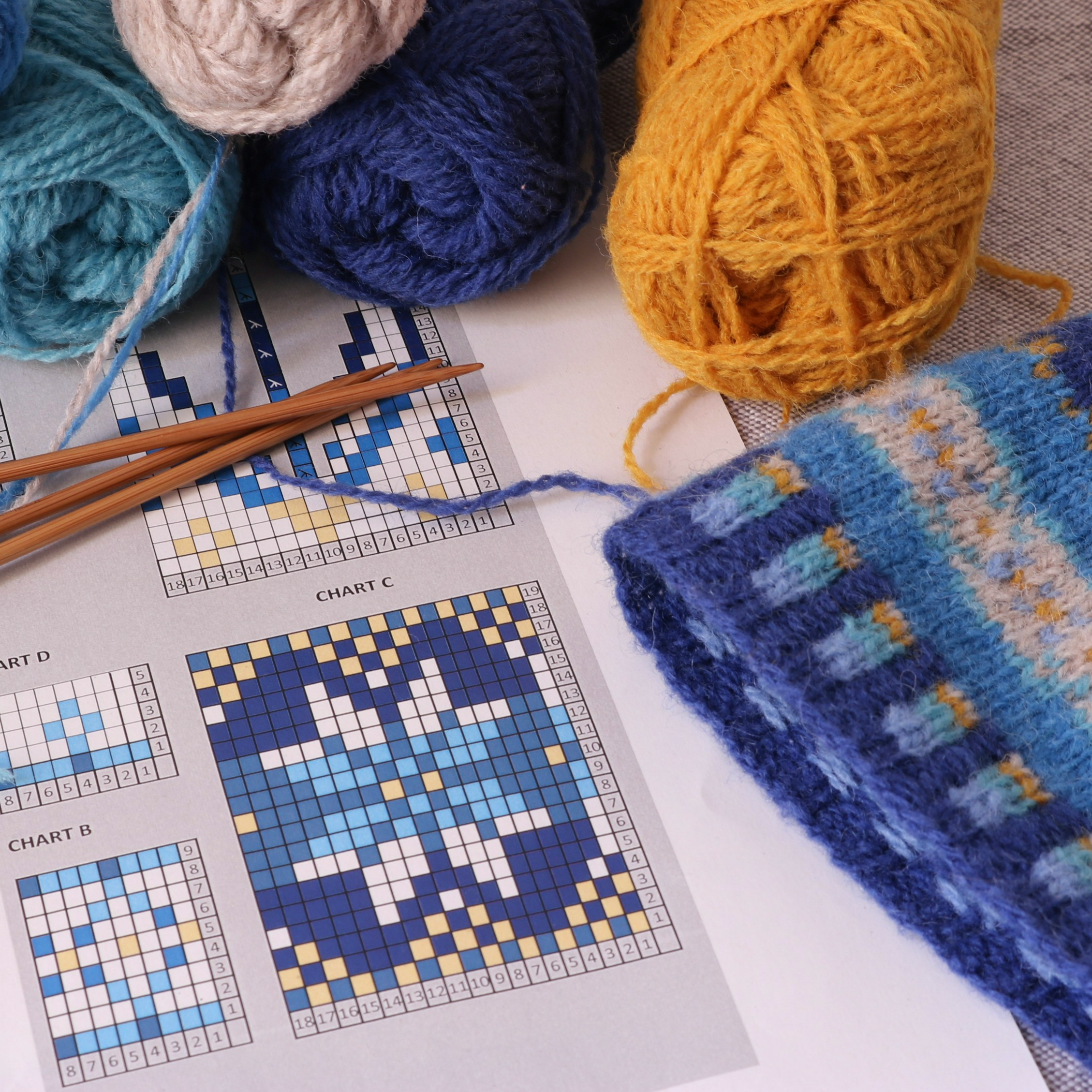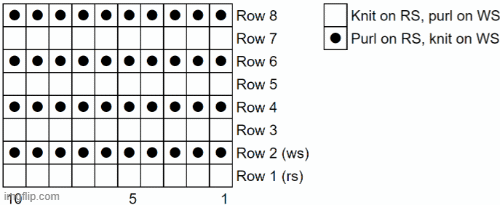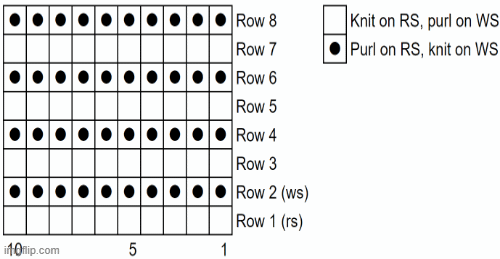How to read knitting charts
A quick start guide
Contents:

The purpose of knitting charts
Knitting charts are first and foremost a visual representation of what a knitting project will look like. They usually have a grid format, similar to a spreadsheet, where each box represents one stitch. They use symbols to depict the different stitches, and the end result mimics the real-life texture of the finished item.
Knitting charts can also serve as instructions if you know how to read them. To do so, there are three skills you need to know:
- How to read the chart key
- What the row counts mean
- The difference in knitting flat vs knitting in the round
How to read a knitting chart key
The “key” is most important part of a knitting chart. It tells you what each symbol means, so that you can recreate the pattern. There is no universal knitting chart key, and the symbols used can vary greatly between regions and amongst different knitting groups. So it’s important to review the key of a knitting chart and ensure you understand each stitch before casting on.
That being said, there are some common stitch symbols that you’ll quickly learn to recognize.
Knit stitches are often represented by an empty box or a box with a vertical line: 

Purl stitches are often represented by a circle or a horizontal line: 

Here are some common items you’ll see in knitting chart keys on KnitQ:

Reading the row counts
Here on KnitQ, we generally show all rows on our knitting charts. However, you might come across some knitting charts that only list the odd number rows, which can confuse some knitters.

In short: if there are no even-numbered rows, you should work even on those rows.
This means you should knit the knit stitches and purl the purl stitches as you cross them (unless otherwise stated in the pattern). The even rows are intentionally left out to A) shorten the chart, and B) provide a more accurate visual representation of the finished project by reducing the vertical stretch.
Reading a knitting chart when knitting flat
Remember how I mentioned a chart is a visual representation of a finished project? To clarify, it’s a visual representation of the Right Side of a finished project. However when knitting flat, you’ll be working on the Wrong Side as well.
On the Right Side:
- Work from right to left ←
- Perform the stitches as detailed in the key
On the Wrong Side:
- Work from left to right →
- Inverse the stitches as you meet them (If the chart says knit, you’ll purl. If the chart says purl, you’ll knit).
For example, take a look at the Garter stitch chart below. Garter stich is by far the easiest stitch to perform because you knit every row. However, you’ll still find purl stitches on the chart because the knit stitches you perform on the wrong side will appear as purls on the right side.

Reading a knitting chart when knitting in the round
The best part of knitting in the round is that you never have to work on the wrong side. Thanks to this, reading knitting charts is a breeze when working in the round. Unlike when knitting flat, there’s no need to inverse stitches.
All you have to do it read the chart from right to left, every single row.

I hope this helps!
If you need more detailed instructions, I highly recommend reading this knitting chart tutorial by Nimble Knits. It’s more comprehensive, which is awesome for beginners, but it also includes information on more advanced knitting charts such as colorwork and lace.
Want FREE knitting patterns?
Subscribers get FREE access to newly-released patterns.

One Comment